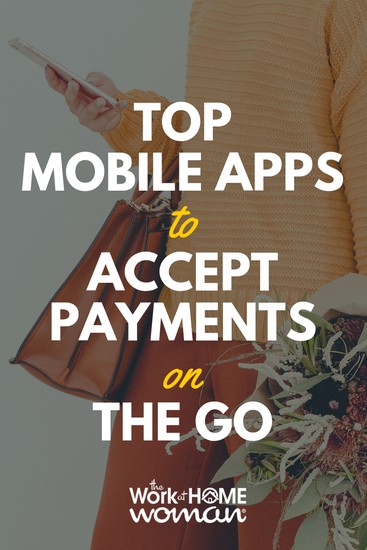A couple of years ago, a friend and I were hanging out at a craft fair when we found some handmade soap that we loved and desperately wanted to buy. Unfortunately, neither of us had thought to bring cash; we were about to leave to find an ATM when the vendor said, “I can just swipe your card here.”

Then she pulled out her smartphone, plugged a plastic card swipey thing into the headphone jack, and a couple of minutes later, the soap was ours.
Accepting mobile payments is common now, but at the time, I was amazed. What magic wizardry was this? I couldn’t wait to tell my friends—they had a touring band and were lamenting their lack of ability to accept credit cards on the road. I think I told everybody I met that day about it. “On her smartphone!” I kept exclaiming over and over … until my friend told me I was annoying and demanded I stop talking about it.
Now there are a bunch of different apps that will allow you to accept mobile payments, and card swipers come in a bunch of different shapes and sizes.
Security is the biggest issue now. According to “Designing an iOS Payments SDK for Security,” one of the biggest challenges facing the mobile payment industry is finding a way to keep sensitive and personal information from being stored within the app’s source code.
Before you freak out, though, you should know there are several major mobile payment companies that have seen to this. In some cases, the vendors don’t ever even see the customer’s information. They just see how much they earned from the sale. So which of these companies is the best?
1. WePay
WePay is often billed as the “anti-PayPal.” It was built as a way for groups of people to pool their money together for a common purpose (if this sounds like crowdfunding, you’re right—many crowdfunding sites actually use the WePay API in their systems). Today, online merchants can plug the API into their sites and shopping carts, which help with buyer retention. There is also an app that allows independent merchants to accept payments wherever they are. The fees are pretty competitive, too: 2.9%+.$0.30 for credit card payments and 1%+$0.30 for payments made through a bank account.
2. Square
Square is, by far, the most widely recognized mobile payment application out there right now. It is compatible with both iOS and Android systems and is free to download. Your account’s registration is also free—the company makes money by taking a small percentage of what you earn. Right now, the company takes less than 3% of your sales. You can also log purchases paid for in cash and, if you have the app for your iPad, effectively turn your tablet into a fully-fledged POS system with an itemized register, which allows you to more closely track your inventory and sales. It’s also fast—it only takes a day or two for your money to get transferred from your Square account to your bank account.
Full disclosure: This is the app I use.
3. Intuit GoPayment
Intuit GoPayment is Intuit’s answer to Square and the other systems, and it’s pretty sweet. When you set up your account, you can decide whether you want to pay an upfront processing fee or a small percentage of every sale. In addition to tracking credit card and cash sales, you can use this POS to accept checks. Another major point in Intuit’s favor is that it integrates with QuickBooks, so you don’t have to worry about whether or not you remembered to record your mobile sales (or about the human error while doing so). You can also set it up to automatically charge sales tax (if that is required on what you are selling). You can even set up your receipts to have your company’s logo.
4. PayPal Here
You probably already take PayPal payments, right? The PayPal Here mobile payment option is basically an extension of that system. The PayPal mobile payment system is pretty much like the other options that are out there—sales tracking, low fees, easy to use, etc. The primary benefit of using the PayPal Here system is that, when you sign up for it, you are also issued a PayPal debit card (unless you already have one). If you don’t already have a PayPal debit card, it’s great. It links directly to your PayPal account, allowing you access to your money as soon as it lands in your account (as opposed to having to wait a few days for it to find its way to your bank account).
Full disclosure: I do not have PayPal Here, but I do have the PayPal debit card, and it has saved my bacon more than once.
Conclusion
There are, of course, other mobile payment options out there—some that link directly to your bank account (if you bank with Chase, for example). Others are made specifically for certain types of businesses. Some are built to allow people to pay via their own smartphones instead of your swiping a card. The type of payment app you use is going to depend more upon your current setup and what best integrates into it.
Erin Steiner is a freelance content creator from Portland, Oregon. In addition to creating content for her clients, she manages her own active YouTube channel, blog, and social media presence.







I didn’t know about PayPal Here. Here in Scandinavia, iZettle is a popular service. PayPal completed its acquisition of iZettle in September. Another service that is special is Swish for the Scandinavian market. You link the Swish app to your bank account and use your phone number as the contact detail during the transaction. You could have a different identification number if you are using Swish for your company.
Thanks for sharing those options, Martin!